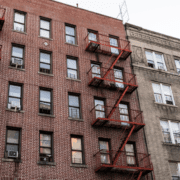The Convergence of Two Generations and Its Impact on Housing Demands
A baby boomer is widely regarded as someone born in the US between the years of 1946 and 1964. With 10,000 of these people turning 65 every day through 2030, the baby boomer demographic points to the age-qualified space as the largest emerging market for new housing. But until that market is met with the necessary volume of purpose-built housing, the Baby Boomer generation will need to compete with Generation Y for urban living accommodations. Generation Y, or Millennials, are any American born between 1980 and 1994. Despite the significant age gap, the living situations the two generations desire are very similar.
Both generational cohorts are looking for:
- Urban living
- Short commutes
- Walkability
- Access to public transit
- Close proximity to shops, restaurants, bars, and city centers
- Low maintenance housing
- Ample amenities (e.g. pool, fitness center, dog park, coffee bar, etc.)
And neither generational cohort is concerned with:
- Amenities for children
- School districts
- House upkeep
- Mowing lawns
- Shoveling snow
Millennials desire minimal home responsibility and upkeep. They are busy building careers and nurturing social lives, which means home is oftentimes merely a place to sleep. Baby Boomers are becoming empty nesters. They are enjoying the newly rediscovered freedoms they had prior to children and life in the suburbs.
While places like Manhattan, Chicago, and Los Angeles have been experiencing this phenomenon for almost two decades now, it is only recently that it has taken hold in other cities. Available urban multifamily housing is suddenly being leased by a more diverse age group. Previous generations jumped from suburban homes to retirement homes and senior living communities. But Baby Boomers are gravitating toward urban centers before the retirement home.
The biggest difference between Millennials and Baby Boomers is the decision-making process. The “active adult” knows what they want. They have purchased real estate before, done home renovations, and furnished their own living spaces for decades. Cheaper finishes such as vinyl floors and outdated appliances may be deal breakers for this demographic. The Baby Boomers desire living conditions that are on par with or improvements to the homes they are leaving. This means high-end finishes like granite or marble countertops, hardwood floors throughout, large bathrooms, and walk-in closets. On the other hand, the Millennial won’t get too hung up on small details because they know they will move again. Housing choices are not permanent for them at this point in their lives.
According to a new analysis of U.S. Census Bureau data by RENTCafe, senior renters are actually the fastest growing segment of the country’s rental population. Currently, the most popular options for “active adult” are the higher-end multifamily apartment complexes that were built with a younger demographic in mind. While this is good news for current property owners because they now have a second target demographic to market to, this is also good news for future projects. For opportunistic companies interested in acquiring and developing multifamily properties as the market begins to tighten and interest rates start to rise, this presents a unique opening.
Baby Boomers are not a demographic that has had a large quantity of purpose-built housing developed for them in the past. Traditionally, this group would be spending another decade in their “forever homes” before moving to senior living accommodations. The steady stream of demand by 55-75 year-olds who are looking to shed the financial burdens of home ownership and move into low-maintenance living conditions warrants the development of more Baby Boomer-dedicated mixed-use living environments.
The demand is already there and it will continue to grow in both primary and secondary markets. It will be very interesting to watch how the supply for this specific age group grows in the future. Expect to see this urban migration of the young and old to continue for years to come.
To learn a little more about some of the secondary markets CRE professionals are keeping an eye on in 2018, click here!











